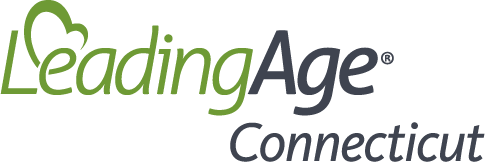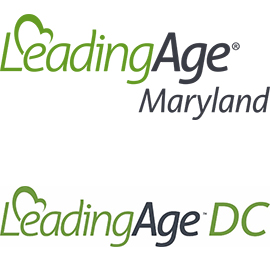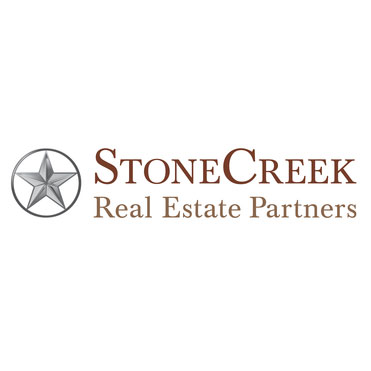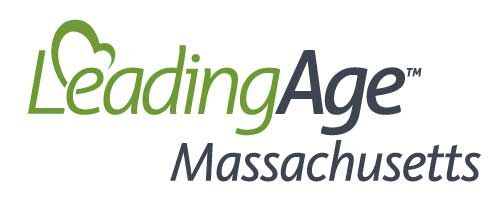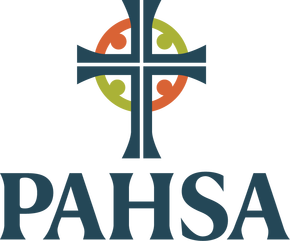Market Commentary: Are Tax Hikes Inevitable?
by Gayl Mileszko
All the daily headlines lead us to believe that significant tax hikes are inevitable. There are innumerable fiscal challenges. We have spent $5.3 trillion so far in response to the pandemic-induced recession. There is serious talk of another multi-trillion infrastructure package. The balance sheet of the Federal Reserve has ballooned to $7.7 trillion. Our projected budget deficit — just halfway through the fiscal year — exceeds $1.7 trillion. The national debt now exceeds $28.2 trillion, a figure so large that it has lost meaning for most of us. The President who took office 100 days ago is seen by a good portion of the electorate as having a “mandate” to impose higher taxes on wealthy citizens and big business.
It is easy to understand why tax-exempt municipal bonds are now becoming scarcer and pricier amid all this tax hike chatter. The financial markets seem to sense a growing consensus for action based on media attention to various policymakers with platforms if not jurisdiction. Last year there was a “tax the rich” and “stick it to the corporations” campaign narrative that appeared to generate support for bogeys at around $400,000 in income, $1 million of gifts, and estates over $3.5 million. There are big bulls-eyes on companies seen as benefitting from the 2017 Trump tax cuts. Talk of retroactive applications makes the current grab for tax advantages all the more understandable.
Not a lot of opposition to the talk of tax increases has yet emerged. First of all, the specifics have not been presented, so special interest groups have nothing solid yet to analyze and object to. Some information was expected in the President’s address to the Joint Session of Congress on Wednesday, but the real details are being fleshed out and will take time. U.S. stocks nevertheless took a dive last Thursday on mere reports of plans to almost double the capital gains tax. The Dow dropped more than 320 points. The S&P 50, Nasdaq and Russell 2000 also fell, as did Treasury, corporate and muni yields.
In America, a tax rebellion is always right around the corner. And, given the changes in work and living arrangements brought about by the coronavirus, we are seeing how quickly our fellow citizens in states like New York and New Jersey now vote with their feet when informed that they must pay a higher so-called “fair share”. Companies with operations in multiple nations do not hesitate to move their headquarters, jobs, ingenious products and tax revenue to more friendly host nations. Any efforts to standardize tax laws among 195 different sovereign nations have about a zero chance of success.
We know of no legal prohibition against tax measures that apply retroactively. However, for a variety of reasons, retroactive tax provisions are not common or practical. In Washington, there are strong accounting, financial planning and litigation lobbies. There is also the simple matter of IRS logistics: printing the new forms and instructions affecting virtually every taxpayer and business, publishing the necessary regulations and guidance, educating customer service representatives and enforcement staff, and so on. If you examine past tax legislation, you will note that some provisions have different forward effective dates. Others may be temporary, with sunset dates in order to conform with the requirements of the enabling legislation. There are quite a few provisions in the 2017 Tax Reform bill that expire in 2025 without further action.
As many presidents have learned, tax reform bills are not so easy to get through Congress. They are nearly impossible if rolled out in pieces or phases. There have been at least 21 bills that increased federal tax revenues over at least one fiscal year since 1940 but the only recent major overhauls took place in 1986 and 2017. In order to succeed with cuts — never mind hikes — an administration has to draft very detailed proposals, preferably supplying specific statutory and explanatory language in its annual budget. Given the number of departments, agencies and offices involved, internal consensus is not easily obtained. The Tax Code is so unwieldy there are really no single source experts. In 2020, there were nearly 10 thousand sections. On the legislative side, numerous congressional committees and subcommittees are involved, with testimony, drafting and re-drafting, mark-ups, votes, speeches, and dialogue with constituents. As we saw in 2017, there are leaks, deep intra-party divisions, odd rules and unusual motivations. It is just plain impossible to “fast-track” anything without very heavy and sustained leadership pressure. In the process, hundreds of errors are made and so many unintended effects are revealed that there is typically at least one “technical corrections” bill required within a year or so of passage. That in and of itself can be a magnet for many unrelated and controversial provisions, and difficult to pass.
In the end, so much horse trading for votes is involved that passage of a 500+ page tax bill with an explanatory report of similar size would likely come at the price of all other major administration priorities. This time, it could possibly come at the expense of health care reform, civil rights, climate change, immigration, and infrastructure initiatives. The infrastructure details mean a lot to those of us in the municipal bond markets, most notably tax provisions involving advance refundings. But bear in mind that there are more than 12,000 active, registered lobbyists in DC and almost all of them have at least one special tax provision that they may want included or excluded. The budget committees, Congressional Budget Office, Office of Management and Budget, the Treasury, and the Joint Committee on Taxation are all involved in “scoring” the revenue impact of legislative proposals. These are not simple exercises and they are highly political. If reform is not achieved early in the honeymoon period, sophisticated vote counters and insider knowledge can lead to early pivots by certain classes of taxpayers and international/supranational corporations, significantly altering the projected revenue impacts before debate on the reforms is even over. The 1981 Reagan cuts and 1993 Clinton hikes were enacted by August of the first year in office; the 2001 Bush cuts were agreed to by May.
We will hear more debate on tax policy in Washington in the coming months as plans unfold and we encourage our readers to become involved. There are thin Democrat margins in the House and Senate, and Senate passage would entail a vice presidential tiebreaker and complete loyalty from the caucus. In the current environment, there will have to be close coordination with the Federal Reserve and monetary policy, and with the budget, taxation, and appropriations committees. If reform is enacted this year, mid-term elections may not be seen as a referendum as the full impact will not be felt by all taxpayers until forms are filed in 2023. If a tax reform bill is not signed into law by December, the odds are that tax hikes are unlikely to happen in 2022, an election year. In the meantime, 26 states and the District of Columbia had notable tax changes take effect in January, and more are on tap for new state fiscal years; in New York, the FY22 increases began this month.
In the past week, municipal bonds in high tax states have traded at extraordinarily high prices. Stanford University bonds with a 5% coupon due in 2049 traded this week at $159.792. Hamilton College bonds issued through Oneida County’s Local Development Corporation with a 5% coupon due in 2051 priced at $158.567. New York City Municipal Water Finance Authority bonds and Port Authority of New York and New Jersey bonds with 5% coupons due in 2031 are trading in the $136-$137 range. Long Island Power Authority and Monmouth County Improvement Authority bonds with a 5% coupon due in 10 years offer yields of only between 0.975% and 1.077%. Many individual and institutional investors are holding on to the bonds with federal as well as state tax exemption while looking for more to buy directly or through mutual funds and exchange traded funds. However, new supply is lacking. This week’s calendar, for example, totals only about $5.5 billion, and more than 20% is being issued for refunding purposes in federally taxable structures, and more than 20% is offered with forward settlements. Last week, the most yield we found was in a $10.9 million BB+ rated Michigan Math and Science Academy bond deal that had 2051 term bonds priced with a 4.00% coupon to yield 3.03%
This week, the Federal Open Market Committee met on Tuesday and Wednesday and kept its ultra-loose policy and near zero rates in effect, as expected. Investors are obsessed with guessing how much more economic ground has to be gained before the Fed begins tapering its monthly Treasury and mortgage bond purchases of $120 billion, and official conversations about rate increases begin. To be clear, Fed futures traders expect no changes in rates this year.
Where do you invest? We encourage you to contact your HJ Sims representative. Our banking, trading and sales executives are active in the day-to-day markets. For investors, our credit-driven strategies are designed for the outcome of income.
Is this the right time to borrow? For senior living communities, we point out that we are seeing some of the strongest lending conditions in our 86-year history. Our aim as always is to Partner Right, Structure Right and Execute Right.
Exclusive Opportunities For Our Clients
LWC21 CFO Brunch Session
In this session from our 18th Annual HJ Sims Late Winter Conference, in February 2021, thought-provoking insight from exceptional financing executives across the non-profit and proprietary segments of the senior living industry was shared in a question-and-answer format. The financial leaders focusing on COVID-19-related challenges and lessons learned during the COVID-19 Pandemic. Highlights include:
- COVID-19’s Impact on Growth Plans
- Ways to generate expense savings to offset the impacts of COVID-19
- Low Interest Rate Environment
- Lessons Learned during the Pandemic
COVID-19’s Impact on Growth Plans
Each organization noted the challenges of acquiring or affiliating with organizations during the Pandemic. However, all organizations believe there will be more acquisition opportunities in 2021, as the Pandemic begins to end. Benchmark Senior Living has seen limited acquisition opportunities throughout the Pandemic, acquiring only one CCRC in the last year. They expect to acquire more properties in the near future, as struggling communities become available for purchase.
Lifespace Communities has focused on redeveloping and/or expanding communities during the COVID Pandemic. Due to the impact of the Pandemic, they had to frequently revisit market studies and reconfigure expansions to meet the current market. Additionally, they have seen more opportunities for affiliations, especially with single-site communities that would like to be part of a strong non-profit system.
While Lifespace is not actively seeking affiliations, they typically bring in communities on a stand-alone basis. Once the community stabilizes, they then merge the community into the obligated group.
Despite the Pandemic, Voralto Senior Living is in growth mode and is actively seeking acquisitions. Voralto believes there are opportunities under all economic conditions. During the next quarter, they anticipate closing on three communities.
Where have you sought expense savings to offset the impacts of COVID-19?
To mitigate the Pandemic’s impact on census levels, senior living providers have had to find various ways to reduce expenses. Voralto has sought to lower staffing and non-resident care expenses. While Voralto has not had to lay off employees, they have seen a reduction in staffing due to a decline in census levels. To lower staffing expenses, they have focused on hiring more part-time staff, conducting cross training and sharing employees between communities. Voralto has lowered non-resident care expenses by negotiating with supply vendors and purchasing PPE in bulk.
Alexia Pozar of HJ Sims has also seen senior living providers lower expenses through reduced staffing. Additionally, she has seen cost savings in the following areas:
- Advertising: Senior living communities have reduced spending on newspaper/mail advertising and often switched to managing their own social media.
- Dining: Reduced costs have been experienced through streamlining menus and managing food waste.
- Activity/Entertainment: Due to Pandemic restrictions, activity expenses have decreased.
- Deferring Capital Improvements: If possible, communities have delayed spending funds on repair and replacement.
- Negotiating with lenders: Many communities have been able to negotiate with their banks on lower interest rates or loan forgiveness due to the Pandemic.
Low Interest Rate Environment
One of the few silver linings during the past year has been historically low interest rates. These low rates have allowed senior living communities to refinance loans, resulting in significant debt service savings. Benchmark Senior Living has benefited as actual interest rates on debt associated with its $1.8 billion portfolio recapitalization are below underwritten rates, allowing Benchmark to offset a large portion of lost revenues due to the Pandemic.
Lifespace Communities has seen its financing options increase due to low interest rates. As a non-profit senior living provider, Lifespace Communities has typically
used fixed-rate, tax-exempt bonds to finance capital improvements. Rates have reached a threshold to where typically non-viable options, such as taxable bonds, have become available. In addition, Lifespace has utilized commercial bank loans to reduce debt service, taking advantage of ultra-low bank rates.
Lessons Learned during the Pandemic
The Pandemic forced senior living providers to face unprecedented challenges, which led organizations to learn valuable lessons for the future. All panelists indicated that valuable staff and team culture often allowed their organizations to overcome the challenges of the past year. Voralto Senior Living and Benchmark Senior Living found that rewarding employees, either through premium pay or other incentives, like providing meals to staff and their families, enhanced employee retention efforts.
Further, many of the panelists gained appreciation of the importance of technology and communication. HJ Sims’ Alexia Pozar noted that the Pandemic required organizations to be transparent and communicate effectively with their staff, residents, residents’ families and vendors/lenders in order to retain staff and residents, calm fears and negotiate new lending terms.
Lifespace Communities learned about the importance of a strong balance sheet and operational results in poor economic conditions. Lifespace had a strong balance sheet coming into 2020, which has allowed the organization to “weather the storm.” Additionally, they noted the importance of strong operational results beyond entrance fees, which are often tied to economic conditions outside the control of the senior living provider.
Lastly, Voralto and Benchmark discovered that they needed the ability to adapt in the early stages of the Pandemic to ensure the operational success of their organizations. To meet new challenges, Benchmark often had management oversee processes that were outside their normal role. Voralto found that they had to quickly to new rules and regulations, ensuring that they could continue marketing efforts and visitations. Pozar found that organizations with strong internal policies and best practices were greatest equipped to effectively adapt and face unforeseen challenges.
For more information, please contact Brett Edwards at [email protected].
For coverage on any of our other conference sessions, please visit our events page.
Panel of Financial Executives

Nick Harshfield
Chief Financial Officer
Lifespace Communities

Alexia Pozar
HJ Sims

Dennis Murphy
Senior Director of Investments
Benchmark Senior Living

Toby Timmermeyer
Controller
Voralto Senior Living
Replay our 18th Annual Late Winter Conference
HJ Sims arranges $4M PACE financing for StoneCreek
HJ Sims completed a $3.8 million retroactive Property Assessed Clean Energy (PACE) financing package on behalf of StoneCreek Real Estate Partners and Civitas Senior Living, for StoneCreek Littleton, a 92-unit assisted living and memory care facility in Littleton, Colorado that opened in January 2020. Please read more in Senior Housing News.
LeadingAge CT Virtual EXPO
LeadingAge TX Annual Conference
2021 Virtual Annual Conference & Solutions EXPO
Attendance: Jimmy Rester
Virtual Exhibitor Booth
LeadingAge MD/DC Joint Conference
Virtual Event:
A conference “journey forward” created for leaders to connect in a forum where you can discuss the tough moments from the last year, hear ideas that can transform your organization, and make sure you and your teams are ready for the next wave of innovation in the aging services field.
Session Date & Time: June 3, 2021 from 12pm-12:45pm.
Thought Leadership and Educational Session:
One Doesn’t Have to Be the Loneliest Number: How Single-Site LPCs Can Continue to Thrive
Melissa Messina conducts a high-level discussion of strategic planning for single site communities that do not involve merger and acquisition opportunities. Two single site life plan communities in Maryland – Broadmead, which is located in the rolling hills of Cockeysville, and Edenwald, which is more urban in Towson, will be featured providing in-depth experience and insights. One LPC is situated in a more suburban/rural setting and one in a more urban setting – and will discuss their experience as the premier senior living providers in the area. In particular, an assessment of the key factors from an operational, financial, and leadership perspective that have converged and allowed the communities to cultivate their reputations for resident service and to thrive from a financial perspective, including commentary around advantages the communities have relative to larger, multi-site organizations. In addition, instead of conveying the fruits of those successes to a parent organization, the communities will discuss how they have been able to leverage their successes to continue improving their ability to respond to the needs of its current and future residents, with recent expansion activity.
Learning Objectives:
- Discuss the key factors, emphasizing those with the greatest degree of transferability and those unique to single-site providers, that financially-sound single-site LPCs share.
- Provide insight into the approach to strategic planning of the communities, and how their status as a single-site provider adds to their overall flexibility with respect to decision-making.
- Learn from commentary regarding how strategic planning, specifically for the unique challenges that single-site providers face, has been and may in the future be affected as the world continues to emerge from the pandemic.
Featured Speakers:
- Melissa Messina, Senior Vice President, HJ Sims
- Mark Beggs, President and CEO, Edenwald
Robin Somers, President and CEO, Broadmead
Contacts:
- Aaron Rulnick, Managing Principal
- Melissa Messina, Senior Vice President
As we continue to experience fluctuations in our capital markets, HJ Sims is committed to Tracking the COVID-19 Impact.
HJ Sims Partners with StoneCreek Real Estate Partners to Facilitate $3.8 million in Retroactive PACE Financing
FOR IMMEDIATE RELEASE
CONTACT: Tara Perkins, AVP | 203-418-9049 | [email protected]
HJ Sims Partners with StoneCreek Real Estate Partners to Facilitate $3.8 million in Retroactive PACE Financing
FAIRFIELD, CT– HJ Sims (Sims), a privately held investment bank and wealth management firm founded in 1935, is pleased to announce a successful April 2021 Retroactive Property Assessed Clean Energy (PACE) financing in the amount of $3.8 million for StoneCreek Real Estate Partners (StoneCreek).
StoneCreek, a Dallas based developer, is a collaboration of professionals with 50+ years of combined experience in the operations, development and ownership of successful senior living communities in TX, CO and AZ. The operator, Civitas Senior Living (Civitas), is a Fort Worth, TX based for-profit owner/operator of senior living communities in TX, FL, OK, NM, KY and AZ. Founded in 2012, Civitas has 100+ corporate employees and manages 45+ senior living communities.
The StoneCreek Littleton development is new construction of a 92-unit senior housing community with 70 assisted living units and 22 memory care units. The community opened in January of 2020 and provides local access to quality senior housing and care in the Littleton area of Denver. With occupancy and operational challenges related to the COVID-19 pandemic, StoneCreek was exploring alternative capital sources to provide additional operational leverage when Sims proposed exploring retroactive PACE financing.
PACE is a Public/Private partnership that allows property owners to finance projects through voluntary assessments placed on the property by a state economic development agency. The program finances 100% of the energy efficiency, renewable energy, water conservation, resilience improvements and the related costs for construction and renovations/retrofits up to about 20% of the property’s appraised value. The financing is collected with regular local real estate taxes and assessment payments are amortized at a fixed-rate over the useful life of the project (15-25 years). The PACE program is typically considered an alternative source of financing to mezzanine debt where interest rates average between 12%-15%. In many states, PACE is allowed to be applied retroactively post-certificate of occupancy for qualified costs for a determinate amount of time.
Sims coordinated with StoneCreek, Civitas, the PACE loan provider and the Colorado PACE Authority for approval for PACE financing from the senior construction lender. Despite the atypical nature of the program, the financing team satisfied the concerns of the senior construction lender while also navigating the various regulatory challenges associated with multi-party financings.
StoneCreek, with the guidance of Sims, was able to borrow $3.8 million in PACE financing at 5.85% to finance necessary operating expenses related to an early 2020 opening and the ensuing impact of the Pandemic.
Financed Right® Solutions— James Rester: 901.652.7378 | [email protected], Curtis King: 603.219.3158 | [email protected] or Ryan Snow: 843.870.4081 | [email protected].
ABOUT HJ SIMS: Founded in 1935, HJ Sims is a privately held investment bank and wealth management firm. Headquartered in Fairfield, CT, Sims has nationwide investment banking, private wealth management and trading locations. Member FINRA, SIPC. Testimonials may not be representative of another client’s experience. Past performance is no guarantee of future results. Facebook, LinkedIn, Twitter, Instagram.
###
Your Portfolio Holds So Much Potential
Investment Income Expertise
With more than 85 years of expertise, we help you to reach your investment goals. Why just invest in bond funds when your portfolio holds so much more potential? We offer in-house holistic wealth management, examining equities, individual high-yield instruments, alternative investment strategies, portfolio management and more – helping you leverage the potential within the market, adjusting your portfolio to meet current conditions and better protect your assets.
Watch the video below to learn more.
StoneCreek at Littleton (April 2021)
HJ Sims Partners with StoneCreek Real Estate Partners and Civitas Senior Living to facilitate $3.8 million in Retroactive PACE Financing. The StoneCreek of Littleton development is a new construction, 92-unit senior housing community that includes 70 assisted living units and 22 memory care units providing local access to quality senior housing and care in the Littleton area of Denver, Colorado.
Continue readingMarket Commentary: Blazing Straddles
by Gayl Mileszko
We live in an era when past history is being denounced, flags and monuments buried, and classic old books and movies pulled from the shelves as perceived evidence of systemic racism. One fellow who paid a pretty sum to send his pre-teen daughter to a prominent prep school in New York felt that school leaders were going too far with sudden changes to the school’s curriculum and admissions requirements. He categorized the new policies as mob appeasement and sent a thought-provoking letter expressing his opinion on the woke wars and cancel culture to other parents at the school, entreating them to make their views known to the administration and board. His words soon went viral, stirring emotional responses and revealing how differently we view civic-mindedness.
The Pandemic has certainly magnified some big social, economic and political gulfs in our society that cannot be ignored. But as a republic, as a nation, we will always have certain continental divides. Every generation has stories about the societal changes and challenges we have encountered, fought, adapted to, and overcome. For those of us who grew up in the 1970’s, we had the crises of the Vietnam War, Watergate, double-digit inflation and energy shortages. But this was the decade in which we built the Sears Tower, invented floppy disks, digital wristwatches, portable cassettes, cell phones and voice mail, recorded great music, and passed a gender equality law. We took inspiration from the perfect wins by Mark Spitz, Nadia Comaneci, the Miami Dolphins, Billie Jean King, and Secretariat. We escaped by reading J.R.R. Tolkien fantasies and Agatha Christie mysteries, and by watching movies like the Godfather and Rocky. And we were able to laugh at ourselves and all the stereotypes portrayed in Blazing Saddles, the off-color comedy which has been deemed – at least for now – “culturally, historically, or aesthetically significant” by the Library of Congress and preserved in the National Film Registry.
It will be several decades before historians assess the moment in which we now live and document the social and political highlights and lowlights of this Pandemic era. In retrospect, economic conditions will be the focus for many. Reference will be made to the blazing hot financial markets that categorized the start of the decade, in spite of everything else, stoked by unprecedented central bank interventions and fiscal stimulus. In the depth of a worldwide recession, an endless series of records is being set. Given assurances of more bond-buying and rate controls for the next few years, there may be no stopping the rallies as the recovery takes hold. For new investors unaccustomed to volatility, the day-to-day performance are often jittery with dips and bumps driven by virus case reports, corporate earnings announcements, and weekly government data almost always released with a positive spin. There are also numerous technical factors, policy decisions involving negative interest rates by other central banks, and unexpected events like the situation with Ever Given, that massive container ship that clogged one of the world’s most vital waterways for six days and affected billions of maritime commerce.
Straddles, for those unfamiliar with the official definition, are typically strategies used by traders who anticipate a big move in the price of a stock but want to hedge their bets as to whether it will go up or down. So straddling is a neutral strategy involving the simultaneous buy of a put option and a call option on a stock with the same strike price and expiration date. The straddler profits whenever the stock rises or falls from the strike price by an amount that is more than the cost of the premium. In the current market, we are seeing a different type of straddler – the equity buyer that also likes higher yielding municipal bonds. This is typically a higher income individual residing in a high tax state who likes the dividends and returns of equities but seeks offsetting tax-exempt income and relative safety, mostly from essential public purpose bonds issued with both state and federal tax exemptions paying semi-annual interest and pledging the return of the original principal at maturity. He or she sees the muni market as solid, fairly liquid, and social good-promoting, one that has been rising with — although uncorrelated to — stocks. This investor might straddle other sectors and asset classes as well; CCC-rated corporate bonds, leveraged loans, bitcoin, and even non fungible tokens (NFT), units of data stored on blockchain that commodify and certify digital assets in art, music and sports, for example, as unique.
Municipal bonds have been in particularly great demand, and the clamor for tax-exempt coupons (if not yields) of 5% continues. High-yield municipal bond mutual funds just reported a record $1.28 billion of inflows, breaking a record set in January. In the week ended April 14, muni funds in total took in $2.255 billion. Exchange-traded muni funds reported inflows of $478 million, after having added $350 million in the previous week. Fund assets under management have surpassed $900 billion for the first time and inflows this year have already surpassed the 12-month total for 8 of the last 11 years. In this context, fund portfolio managers, like individual buyers, are understandably having a hard time sourcing product. The supply calendar continues has been light, typically running between $6 billion to $8 billion a week, much lower during holiday-shortened trading sessions. Prices continue to escalate in the primary and secondary markets. The one-year AAA muni yield is at an all-time low of 0.05%.
Some Members of Congress are straddling the fence, but there is non-stop tax talk coming out of Washington. It has many families searching for tax-advantaged investments. The last round of state and local stimulus has bolstered the finances of many frequent borrowers and investors heavy with cash see municipal credit outlooks as improved. Credit spreads continue to compress, so any coupon or call structure that offers additional yield is being bid up. Few muni investors are deterred by the recent gyrations in the Treasury market and auction results. At the close on Tuesday, the 10-year AAA muni general obligation bond yield stood at 0.93% or 60% of the comparable U.S. Treasury yield at 1.56%. The 30-year muni benchmark yield at 1.55% was 69% of the comparable Treasury at 2.25%.
Last week, Florida’s Capital Trust Agency sold $859.6 million of non-rated charter school bonds structured with a 2056 maturity that priced with a coupon of 5.00% to yield 4.00%. The Arizona Industrial Development Agency brought a $33.4 million charter school financing for BB rated Somerset Academy of Las Vegas featuring 2051 term bonds priced at 4.00% to yield 3.22%. The California School Finance Authority had an $11.8 million non-rated charter school social bond issue for iLead Lancaster with a 2061 maturity priced at 5.00% to yield 3.64%. And the Public Finance Authority brought a $9.8 million non-rated transaction for Davidson Charter Academy with a single maturity in 2056 priced with a rare 6.00% coupon and an even rarer discount o yield 6.432%. Among other high yield financings, the Cleveland Cuyahoga County Port Authority came to market with a $250.5 million taxable federal lease revenue bond issue for the Veterans Administration Health Care Center that priced at par to yield 4.425% in 2031. The California Community Housing Agency issued $174.1 million of non-rated essential housing bonds due in 2056 with a 4% coupon yielding 3.05%.
This week, we expect the biggest calendar of the year at $10 billion with a significant percent coming as taxable. So far this year, approximately $41.6 billion of municipal bonds have been issued as taxable or with corporate CUSIPs, up 16% over the amount in 2020. California is issuing general obligation bonds with a 5-month forward delivery date, the largest such forward settlement on record and the latest of $5 billion sold in 2021. The State of Connecticut is also coming with $145 million of special tax obligation transportation infrastructure refunding with a forward settlement in mid-October. Approximately eight financings designated as green, social and sustainable bonds are scheduled for sale. But higher yielding offerings are sparse. Three more charter schools plan sales. At this writing, the Dow is up 2.5% so far in April, the S&P 500 and Nasdaq are up more than 4%. The Russell 2000 has declined by 1.45% while oil is up 5.5%, gold is up 3.8%, and silver is up 6%. Bitcoin is down about 5% but Dogecoin, the meme cryptocurrency created as a joke, is blazing new trails with a market cap of $54 billion, one that exceeds that of Ford Motor and Kraft Heinz.
Exclusive Opportunities For Our Clients
Why Small Businesses Matter: HJ Sims
HJ Sims ‘ Managing Principal, Bil Sims, was recently interviewed by the Fairfield Hamlethub. In the article, he discusses HJ Sims’ history, investment banking, bond and wealth management expertise. Read more.
UMA Annual Business Meeting
HJ Sims’ client, Broadview Senior Living at Purchase College featured on CBS NY
Broadview Senior Living at Purchase College, a community under development in Westchester County NY and an HJ Sims’ client, is the latest example of bringing together seniors and students to promote lifelong intergenerational learning on a vibrant college campus. Watch the story on CBS NY. Read the HJ Sims Case Study.
LeadingAge MA Annual Conference
LWC21 Let’s Hear From the Leaders Session
In this session from our 18th Annual HJ Sims Late Winter Conference, in February 2021, thought-provoking insight from exceptional leaders across the non-profit and proprietary segments of the senior living industry was shared in an open dialogue. The leaders discussed key developments and current trends influencing their organizations. Highlights include:
- Crisis Management and Lessons Learned from the COVID-19 Pandemic
- Staffing Changes During and After COVID-19
- The Need for an Open Line of Marketing & Communications
- Social Awareness
Resilience in Crisis/Lessons Learned
The COVID-19 Pandemic has created challenges previously unseen. Suzanne highlighted the importance of adaptability, and maintaining the ability to pivot quickly to rapidly changing circumstances and state guidance. Tom shared that most communities had disaster recovery plans in place, including Pandemic plans, however had focused largely for events such as hurricanes and earthquakes, with less active preparation for a Pandemic event.
Speaking to recovery, David said that while slow, recovery has started. Beyond the vaccines, there are positive signs. For instance, leads, tours and inquiries are increasing. Both Watermark Retirement Communities and HumanGood communities have seen a significant uptick in web traffic. David acknowledged that recovery has been uneven across regions, in part because of differing local rules regarding the closing of campuses due to positive tests among residents or staff.
Staffing Changes During and After COVID
John stated that COVID exacerbated, rather than created, staffing challenges faced by senior living communities. The question facing organizations is how much of the increase in staff expenses is permanent and which will abate as the Pandemic eases. Tom added he does not expect a return to pre-COVID levels, due to the lessons around infection control, greater customer expectations and the need to increase wages to attract and certain staff. John pointed out better wages for front-line health care staff are necessary on an industry-wide basis, otherwise recruitment will become increasingly difficult. Suzanne added increased fees were previously met with strong resistance from residents. During the past budget cycle however, as the majority of fee increases were funding higher staff wages, Aldersgate encountered little to no resistance. Others also indicated their staff appreciation fundraising efforts yielded record results.
Marketing/Communications
Tom discussed Benchmark’s efforts to maintain an open line of communication with their communities, residents and families. In fact, throughout the Pandemic each community has been sending daily communications regarding the status of COVID-19 on campus. John discussed his organization’s efforts to leverage technology, such as tablets, to advance efficiency while improving resident and team member experience.
Social Awareness
Suzanne shared that socially distanced marches were organized at Aldersgate, with leadership from staff, following the death of George Floyd. These occurred on and off-campus, were attended by staff and residents, and even those in the skilled nursing facility. John offered that their internal conversations with staff showed that while good intentions were recognized, they are not enough, that people of color and LGBTQIA+ staff are looking for actions and outcomes. Further, it was understood that this is a journey, and these efforts cannot be viewed as short-term programs. Suzanne added they should not be called programs, as programs eventually terminate, and these should be permanent changes. John added that piecemeal or one-off approaches often do more harm than good. David pointed out that Watermark was able to leverage experienced gained through an art/training reach-out effort to the LGBTQIA+ community, called “Not Another Second,” to implement training around race relations.
For more information, please contact Andrew Nesi at [email protected] or Curtis King at [email protected].
For coverage on any of our other conference sessions, please visit our events page.
Panel of Industry Leaders

John Cochrane
President & CEO
HumanGood

Tom Grape
Chairman & CEO
Benchmark

David Freshwater
Chairman
Watermark Retirement Communities
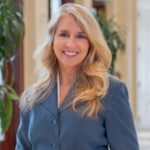
Suzanne Pugh
President & CEO
Aldersgate
Replay our 18th Annual Late Winter Conference
Market Commentary: Mint Condition
by Gayl Mileszko
The U.S. Bureau of Engraving and Printing has responsibility for producing all of our paper currency but the U.S. Mint is the sole manufacturer of legal tender coinage. Originally placed with the State Department in 1792 to produce the coins needed for the nation to conduct its trade and commerce, the Mint became an independent agency in 1799 and then a bureau of the U.S. Treasury in 1873. It is now the world’s largest producer of gold and silver bullion coins. In addition to bullion, pennies, nickels, dimes, and quarters, the Mint also produces coin-related products such as Congressional Gold Medals and commemoratives like the silver dollar, silver half-dollar and gold five-dollar coins just issued in January for the National Law Enforcement Memorial and Museum. More than 1,600 employees work at Mint facilities in Washington, Philadelphia, San Francisco, Denver, West Point and Fort Knox. Although its facilities are closed to the public during the pandemic, the Mint has long offered tours of the production sites in Pennsylvania and Colorado where visitors learn about the craftsmanship involved in the design, sculpture and striking processes for U.S coins, each a miniature work of art.
Last year, the U.S. experienced severe coin shortages as consumers moved to digital transactions and so few of us emptied out piggy banks or cleaned under couch cushions and car seats for loose change and cashed in our coins. The urgent needs of merchants and banks prompted the Mint to increase production to the highest levels since 2001 just as spot prices for nickel increased 5.6% over 2019, platinum cost 3.8% more, gold rose 25.8%, copper dropped 3.6%, and zinc fell 15.4%. The Mint shipped 15.5 billion circulating coins to the Federal Reserve Banks and, in response to the soaring demand for gold, more than 24.7 million ounces of bullion. It transferred the seigniorage, the difference between the face value and cost of production which amounted to $40 million, to the Treasury, chump change in the effort to reduce a federal deficit that has now grown to $1.7 trillion in the first six months of Fiscal Year 2021.
The dictionary definition of coin long read: “a small, flat, and usually round piece of metal issued by a government as money.” The key point was that the coins were issued by a government. This week, COIN is the new Nasdaq ticker symbol for Coinbase, the largest U.S. cryptocurrency exchange. The company has only been around since 2012 but Wednesday’s IPO-like entry has been one of the most anticipated market events of 2021 as it appears to reflect acceptance of crypto as a legitimate industry and points to the possibility of widespread adoption of digital currency. The Coinbase platform enables some 7,000 institutions and 56 million retail customers to buy, sell, and store cryptocurrencies such as Bitcoin and Ethereum. The majority of its revenues come from transaction fees of about 0.5% and services such as storage and analytics, while about 10% of the company’s revenues come from sales of its own crypto assets to customers. It also makes money from things like margin fees and a rewards credit card program. In 2020, total revenue amounted to $1.28 billion, up from around $534 million in 2019 as the company’s monthly transacting user base rose from about 1 million to about 2.8 million. Net income was $322 million. In the first quarter of 2021, estimated revenues grew to $1.8 billion on trading volume of $335 billion as the price of Bitcoin almost doubled, causing the number of active monthly traders to more than double to 6.1 million.
COIN is using the less common practice of a direct listing on the Nasdaq. No new shares will be created in the process, and only some of the 130.7 million of Class A shares and 68.5 million of Class B shares outstanding are being sold to the public. No underwriters are involved, and there is said to be no share dilution or lockup period. Nasdaq and Goldman Sachs set a reference price of $250 per share, giving Coinbase a valuation of $66.5 Billion. Demand appears to be overwhelming and valuations extremely high. The overall value of more than 6,600 coins tracked by CoinGecko recently surpassed $2 trillion. Even Dogecoin, with a Shiba Inu dog as its logo and launched as a joke, now has a market cap of $17 billion. But the decentralized and largely unregulated finance business is unquestionably volatile and still highly mysterious and suspicious to many of us. There is a very complex process of mining with staggering energy requirements and environmental costs. There are caps on supply. Anybody with basic programming skills and an understanding of the technical infrastructure can create and market their own private digital currency. Crypto is understood or misunderstood to involve instruments of money laundering. Assets are kept on a shared ledger known as a blockchain, but if you forget your password you can lose access to your entire digital wallet. Some call it hackproof while others know of scams and see plenty of security risks in trading and network storage. Warren Buffett called Bitcoin a “mirage” but strategists at JPMorgan are suggesting cryptocurrency as a way to hedge against significant fluctuations in traditional asset classes and Bank of New York Mellon has announced plans to hold, transfer and issue digital currencies for its clients. Goldman set up a crypto trading desk and plans to begin offering investments in digital assets. A number of companies including Tesla, Burger King, Xbox, PayPal, and Starbucks now accept bitcoin, recognized as the original cryptocurrency founded in 2009, as a form of payment.
Cryptocurrencies are often confused with other digital currencies but both are now a major focus of central banks around the world. Privately issued digital currencies can certainly reduce the ability of the Federal Reserve to control exchange rates and money supply. But with respect to sovereign digital currencies, the Fed Chair said in February that they are looking “very carefully” at a digital dollar. The Treasury Secretary testified that a digital version of the dollar could help address hurdles to financial inclusion in the U.S. among low-income households. Many concerned with privacy, however, are alarmed as digital currencies are trackable, allowing for surveillance and — potentially — supervision over individual transactions as well as the size of accounts. They can also be programmed to have expiration dates. Sovereign digital currencies could be used to work around U.S. sanctions and potentially oust the dollar as the world’s dominant reserve currency. India is considering a new law that bans all tokenized representation of money unless it is electronic cash from its own central bank. The People’s Bank of China just became the first major central bank to launch a virtual currency, e-CNY. Officials there claim that the purpose is to replace banknotes and coins, to reduce the incentive to use cryptocurrencies and to “back up” privately run electronic payments systems. The trial issuance of digital yuan has begun after 7 years of research, and China plans a broader roll-out next February during the Winter Olympics in Beijing. Officials at the U.S. Treasury, State Department, Pentagon and National Security Council are taking a close look at the implications.
The future of our global financial system appears to be changing, perhaps our legal systems as well with the introduction of smart contracts run on cryptographic code. In a low rate environment with high leverage and sensations of inflation and bubbles, plus policies and conditions arising from the pandemic, capital may be re-deploying from stocks and bonds. But for now, the financial markets remain immersed in day-to-day economic news, which indicates modest inflation and record global growth, as well as developments on the Russia-Ukraine border, with China and Taiwan, Iran and Israel, Minneapolis and Portland, Johnson & Johnson’s vaccine, Washington infrastructure talk and first quarter earnings reports. With the Fed playing down inflation and repeating familiar dovish narratives over and over, the Dow and S&P flip to record highs. Some question the numbers, but Bank of America just reported that inflows into global stock funds in the past 5 months ($576 Billion) have exceeded inflows in the prior 12 years ($452 Billion). Since 2008, inflows to stock funds have totaled $1 trillion versus $2.4 trillion for bond funds.
This week, Treasury auctions are expected to total $271 billion and the first one on Monday met with strong demand. The municipal calendar could total $7 billion, dominated by taxable sales. Five green, social and sustainability bond deals are featured and there is a $252 million non-rated deal for Florida charter schools. Municipals, which saw another $1.77 billion of mutual fund inflows last week, and continue to outperform Treasuries. Tax filings have been delayed to May 15 and cash is abundant. New issue pricings continue to be well received with both price bumps and positive secondary follow-through. Last week’s $7.6 billion slate included a $332.5 million non-rated California CSCDA Community Improvement Authority social bond financing for Altana-Glendale that had a 2056 maturity priced at 4.00% to yield 3.58%. The same maturity and coupon in a California Community Housing Agency issue for Mira Vista Hills Apartments priced to yield 3.70%. Among other high yield deals, the New Jersey Educational Facilities Authority had a $5.6 million tax-exempt series with a $38.5 million taxable Baa3-rated transaction for New Jersey City University structured with 2051 term bonds priced at par to yield 4.431%.
Corporate syndicate desks expect $25 billion of investment grade deals this week and $31 billion of high yield sales including the $5.5 billion United Airlines refinancing and a $1.8 billion deal for the Kissner purchase of Morton Salt. At this writing, the 2-year Treasury yield stands at 0.16%, the 10-year at 1.62%, and the 30-year at 2.30%. The 2-year Baa rated corporate bond yield is 1.77%, the 10-year is at 3.31% and the 30-year stands at 4.17%. The 2-year AAA municipal general obligation bond yield is 0.10%, the 10-year is at 1.01% and the 30-year is at 1.62%. The Dow stands at 33,677, the S&P 500 at 4,141, the Nasdaq at 13,996, the Russell 2000 at 2,228. Oil prices have climbed in the past week to $61.22 a barrel. Gold is priced at $1,745 an ounce, silver at $25.40, and platinum at $1,179. Bitcoin is at $64,478 and Ethereum is nearing $2,383.
Exclusive Opportunities For Our Clients
PAHSA Virtual Spring Conference
2021 Virtual Spring Conference and 61st Annual Meeting
Attendance: Jim Bodine and Aaron Rulnick
PAHSA Sponsor
HJ Sims arranges $102M financing for New York independent living community
HJ Sims arranges $102M financing for New York independent living community; read more in Seniors Housing News.
HJ Sims Arranges $102.1M Financing for Fountaingate Gardens in Commack, New York
HJ Sims Arranges $102.1M Financing for Fountaingate Gardens in Commack, New York; read more in Seniors Housing Business.


